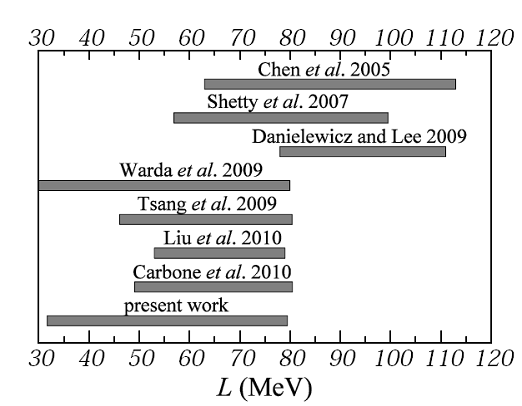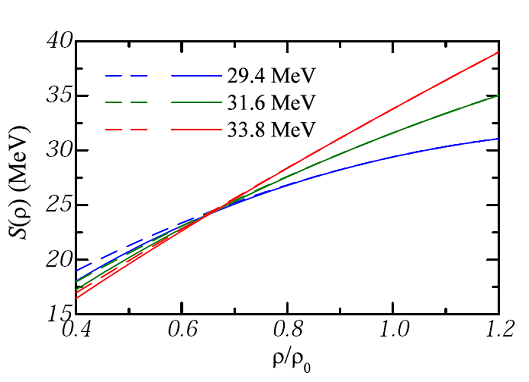Lots of theoretical and experimental research efforts have been performed to constrain the density-dependent symmetry energy. However, due to the strong model dependence, this problem remains unsolved.
A new correlation for the symmetry energy at saturation density S0, the slope parameter L, and the curvature parameter Ksym at the nuclear matter saturation density based on widely different mean-field interactions is established by the researchers in the Theoretical Physics Group at Institute of Modern Physics, Chinese Academy of Sciences (IMP). This relation breaks the model dependence, and constrains the density-dependent symmetry energy.
With this relation and available empirical and theoretical information, the density dependence of the nuclear symmetry energy has been investigated, the researchers have shown that the result is in good agreement with that from the analysis of anti-protonic atoms data. The slope and curvature parameters are found to be L=56 ±24MeV, Ksym= -125±79MeV, respectively. The neutron skin thickness of 208Pb turns out to display a linear correlation with Ksym. Thus, once the neutron skin thickness is measured accurately, L and Ksym of the symmetry energy around the saturation can be determined. Then, richer information about the density dependent behavior of the symmetry energy can be achieved. In addition, it is not suitable to take the form of S(ρ) = S0(ρ/ρ0)γ or S(ρ) = 12.5 (ρ/ρ0)2/3+ Cp (ρ/ρ0)γ to describe the behavior of the symmetry energy as predicted by the mean-field approach around the nuclear saturation density, but S(ρ) = 17.47 (ρ/ρ0)2/3+ C1(ρ/ρ0) + C2(ρ/ρ0)1.52 works well.
The work has been published in Physical Review C 85, 034308 (2012)
The paper can be found on the webpage: http://prc.aps.org/abstract/PRC/v85/i3/e034308

fig.1 Comparison between the L values obtained in the present work and those from other recently various analyses. (Image by IMP)

fig.2 Behavior of the density-dependent symmetry energy with different S0 values. (Image by IMP)

